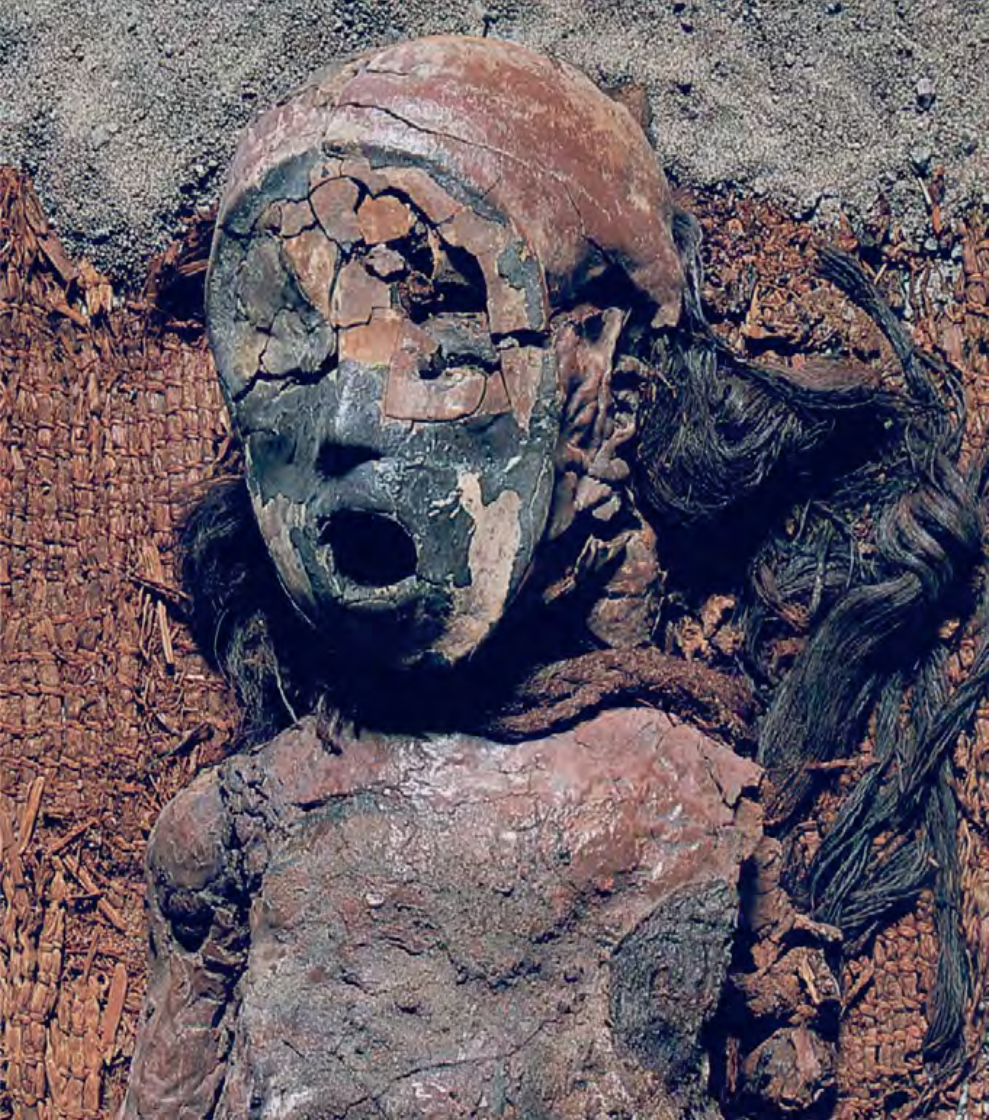Chinchorro of the Atacama Desert
- Period: Hunter/Gatherer Period
- Location: Chile and Peru
- Burials: unknown
- Archaeologists: Marquet PA, Santoro CM, Latorre C, Standen VG, Abades SR, Rivadeneira MM, Arriaza B, & Hochberg ME
- Related Keyword/Categories: Mummification, Funerary Practice

The goal of the study by Marquet et al. (2012) is to examine the emergence of artificial mummification among the Chinchorro of the Atacama Desert in Northern Chile and Southern Peru. They pose a number of questions regarding the practice of mummification among this hunter-gatherer group: 1) what led this group to develop this cultural complexity 2) why is the complexity manifested in an elaborate cult of the dead 3) why does the mummification take on several distinct forms 4) why does the practice exist only between 7.5 and 4.4 thousand years ago? Based on recent models of technological and cultural evolution, they hypothesize that the complexity in the Chinchorro was brought about by an increase in population size driven by beneficial changes in the environment that led to increased resources, which in turn led to increased innovation and accelerated cultural evolution. They also argue that this particular innovation, artificial mummification, manifested due to the same environmental change that created a hyperarid climate. The evidence used to examine these hypotheses includes prehistoric environmental conditions, estimations of population sizes, and archaeological evidence of mortuary practices. Using geological and hydrological surveys of the area they are able to determine that there was increased rainfall from 7.8 to 6.7 thousand years ago, and using ice cores from the Andes suggests that the weather was more stable during this period. Based on 460 Chinchorro archaeological sites and the years of occupation they are able to estimate population size in this area. Their calculations show that the period between 7 and 4 thousand years ago was a period of growth and high population density. There is a dramatic spike at 7 thousand years followed by a sharp decline around 4.8 thousand years ago. The question is then why these conditions lead to changes in mortuary practices. Marquet et al. (2012) argue that complexity manifested in mortuary practices due to the hyperarid environment of the Atacama Desert. They note that little to no decomposition occurs in the desert, so overtime it is possible that the accumulation of the deceased became a major presence in the landscape. Chinchorro deceased prior to 7 thousand years ago primarily were placed in shallow graves in the desert. It is highly likely that wind, erosion and human activity would expose the burials, causing continued visual interaction with the dead. Using Hertz’s argument that decay of the body corresponds with beliefs about the fate of the soul, it is possible that natural mummification was seen as the appropriate method of disposal and with increasing complexity became an artificial practice. As the population increased there was increased technological and cultural innovation. One of these innovations was elaboration of a mortuary process that had previously occurred naturally. It isn’t known whether the practice was limited to specific groups or correlated with some internal social complexity.
References: Marquet PA, Santoro CM, Latorre C, Standen VG, Abades SR, Rivadeneira MM, Arriaza B, & Hochberg ME (2012). Feature Article: Emergence of social complexity among coastal hunter-gatherers in the Atacama Desert of northern Chile. Proceedings of the National Academy of Sciences of the United States of America PMID: 22891345


